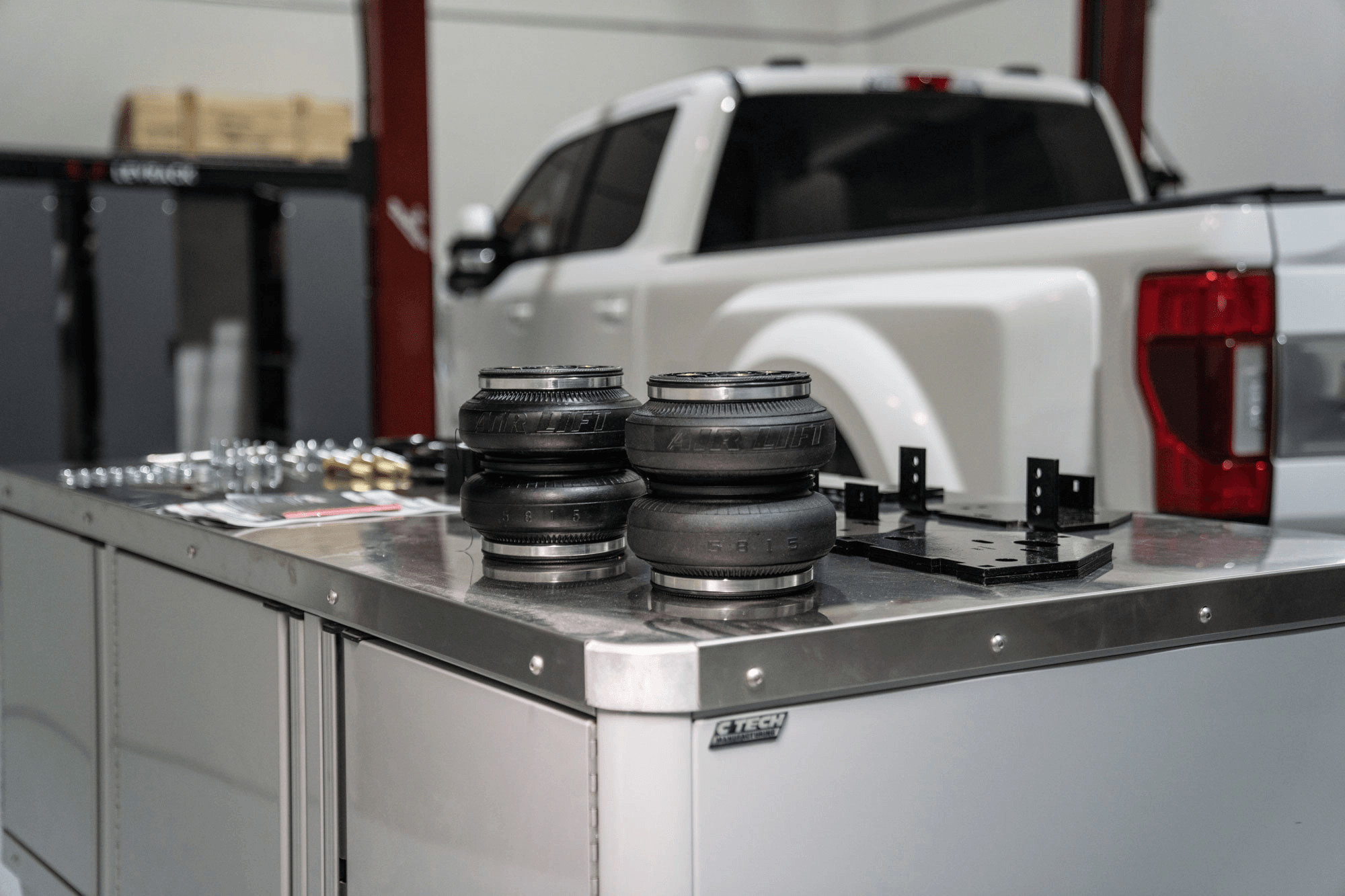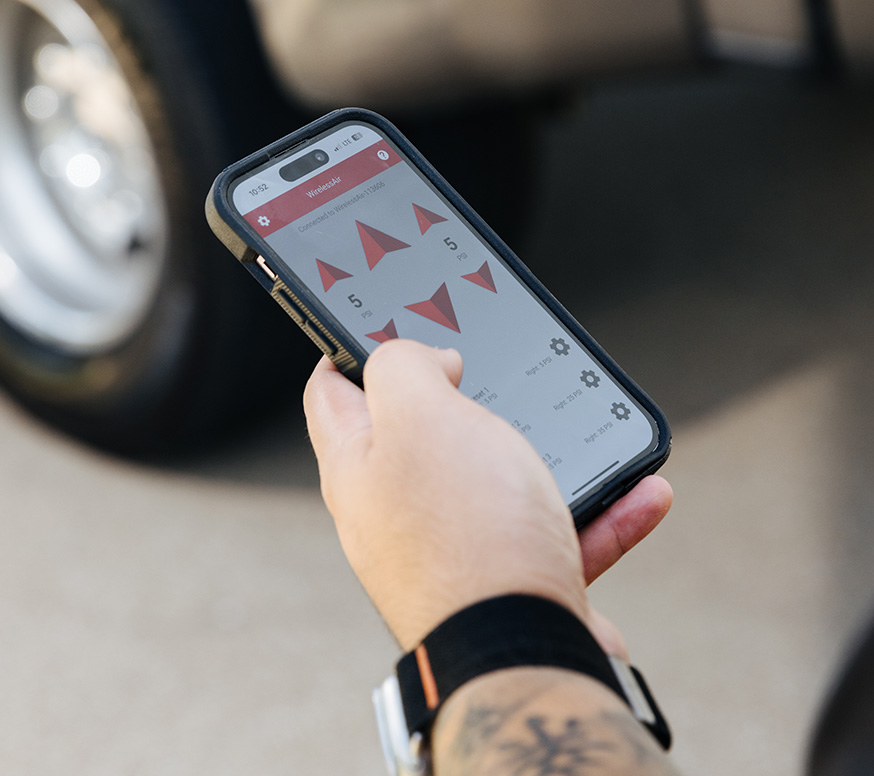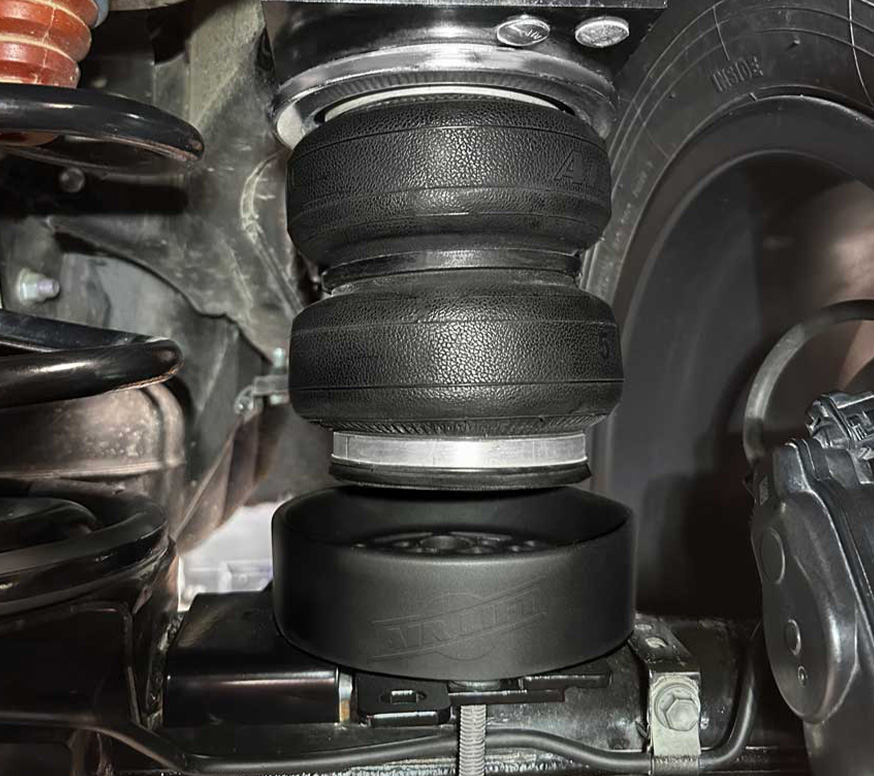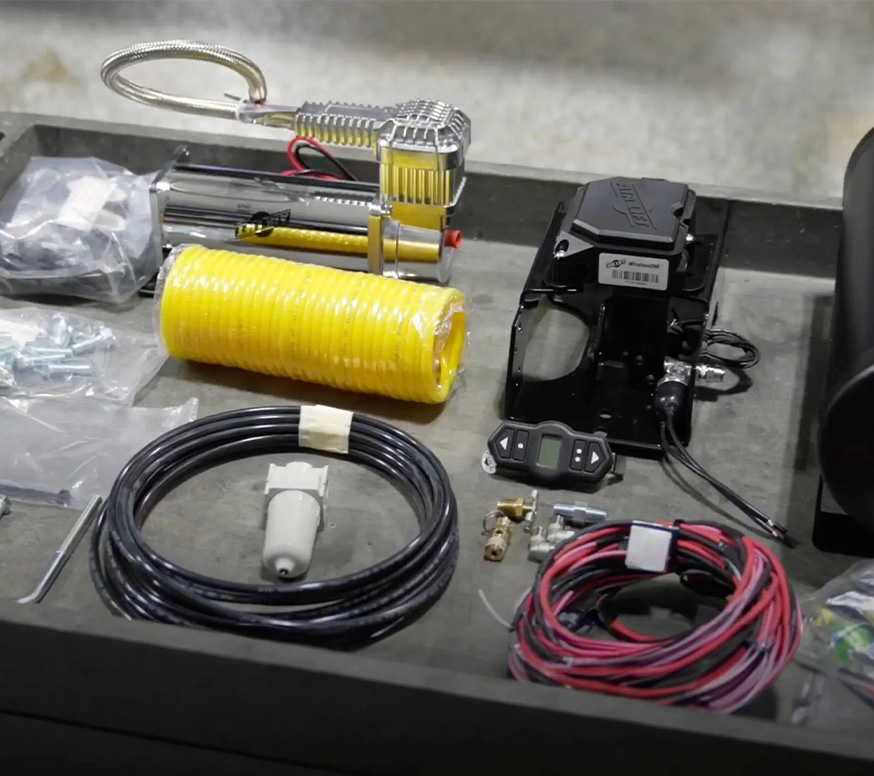
Loading Your Air Spring-Equipped Vehicle
4/7/2014
When you add air springs to your vehicle, you add the ability to level your vehicle depending on your unique load.
Whether it’s a trailer, a 5th wheel, gravel loaded up in the bed, or even just a vehicle full of passengers, air springs give you the ability to level your vehicle on the fly, as the load and road conditions change.
Make Sure You Position Your Load Correctly
While air springs can seem like an easy and immediate solution to anything and everything, not loading your vehicle properly can put unnecessary strain on the vehicle’s axles. Understanding what GVWR is and how it affects the way you load your vehicle will make it easier for air springs to help make your ride comfortable and your trip safe.
Differences in vehicle loading have a big influence on your vehicle.
For example, if you put a 500-pound weight directly over the rear axle, the rear axle would support 100% of that weight and the front axle would be supporting none. If you were to move the weight forward, the weight begins to bear more on the front axle and less on the rear axle.
Likewise, positioning the load towards the left or right of the vehicle will have an unequal effect left-to-right. This can cause the vehicle to sag on one side and drive with an unbalanced feeling. In an extreme situation this will cause steering and safety problems.
If the load is behind the axle (ex: trailer, motorhome overhang, and large load at the back-end of the truck bed) the weight has a mechanical advantage – just like the handle on a pry bar – which will exaggerate the effect of the weight. Moving the same weight behind the axle will have a greater effect as you move the weight back, due to the leverage.
You need to consider where the load will be to determine how much support you will need at which axle or wheel from your air springs.
Air Lift air springs provide a fully adjustable suspension to handle the weight and position of the load providing maximum comfort and safety.
As Always, Never Exceed the Manufacturer’s GVWR.
Regardless of the load’s weight or position, you need to stay within your vehicles specified weight ratings. Your vehicle’s weight ratings will define exactly how much weight can be carried on each axle, how much weight in total can be carried by your vehicle, and how much weight can be towed in combination with your vehicle’s loaded capacity.
Air Lift recommends that you know, understand, and stay within your vehicles ratings for safety and comfort.
Installing and using Air Lift air springs will provide you with the ability to adjust the suspension for your load and vehicle requirements.









